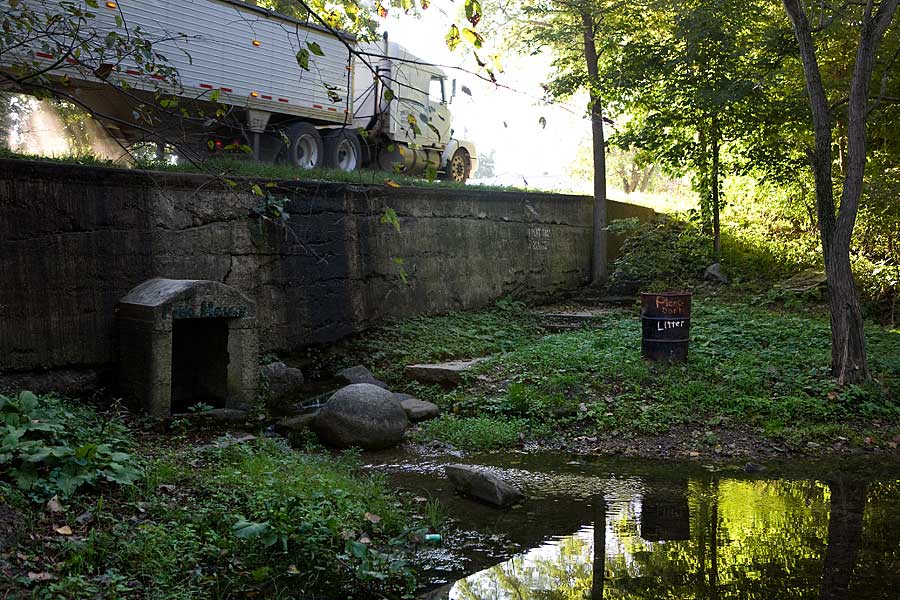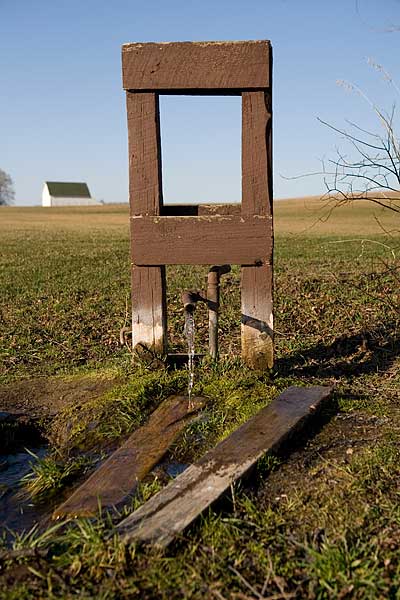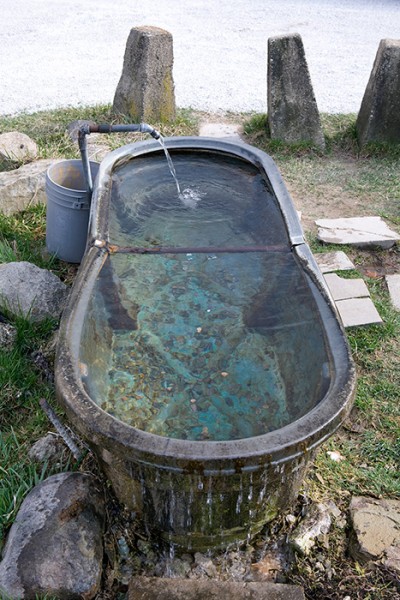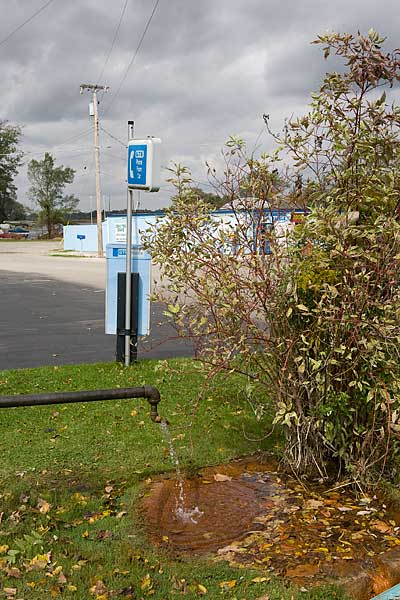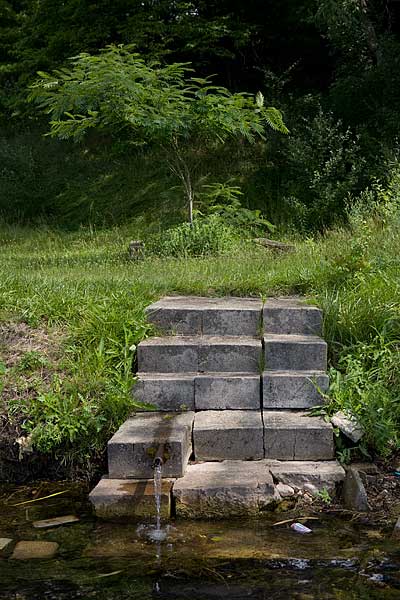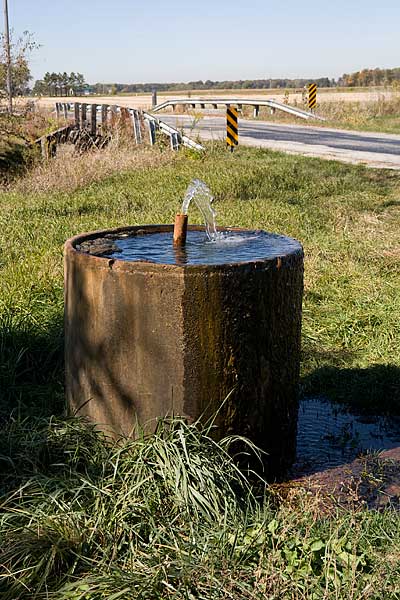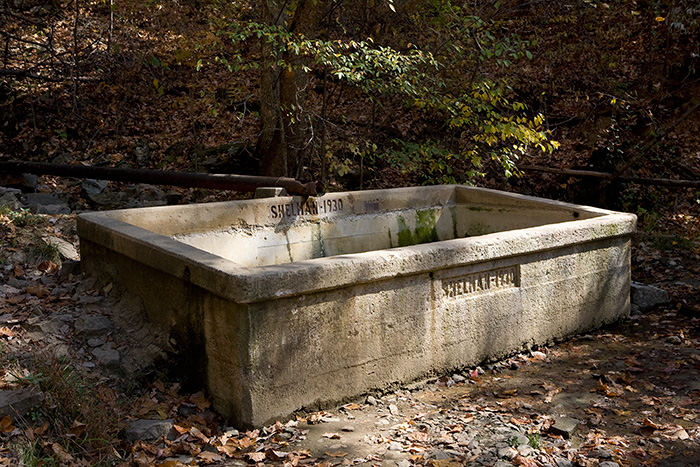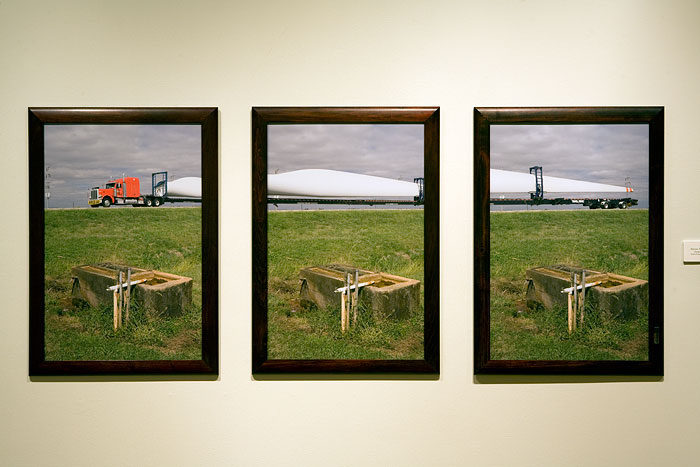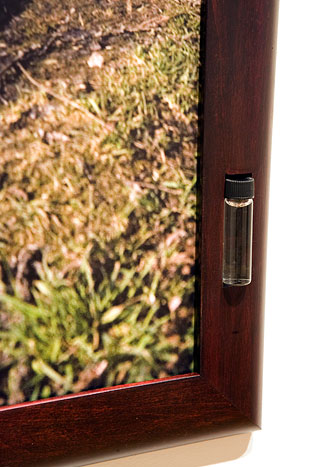An exploration of roadside springs in the Midwest that are used as public water sources. This project is made possible, in part, with support from the Indiana Arts Commission and the National Endowment for the Arts. More images, stories, video, and comments are on the project blog: www.wellstories.com.
Elsewhere online:
Erik Eckholm, “Bubbling Up From the Earth, A Cool, Clear Gift,” New York Times, June 7, 2010.
Artist’s Statement
Well Stories is a project about our relationship with the water we drink. Since 2011, I have been photographing and videotaping roadside springs and the people who visit them.
The inspiration for this project came while I was working on a series of photographs about rural culture in the Midwest. As I traveled to small towns to photograph, I would occasionally hear remarkable stories about public wells from those who lived near them. Local residents would enthusiastically describe the good-tasting water they could get from a flowing pipe in the center of town or on an obscure county road. I would drive to the wells and see people (at times in queues) pull up in cars, fill containers with water, and drive off.
It was a revelation to me that anyone in the 21st-century United States would drink water that comes from a pipe in the ground and would choose to make a trip to gather water rather than turn on a tap at home. I wanted to find out more about people who get their water this way.
Artesian (or flowing) wells are fed from a confined aquifer containing groundwater that is pressurized and flows upwards, without need for a pump. These wells are filtered naturally and in some cases have been flowing for thousands of years. They represent a vestige of the public commons, and often mark very early human settlements.
I am fascinated by the local culture that has grown around these wells and am photographing both the wells and the people who gather water there. Some say they make the trip simply because they like the taste of well water, while others tell me they do not have access to good water in their homes.
This exhibition explores our relationship with water on a number of levels. In a broad sense, it reflects on the primacy of the connection between water and life. It also explores the concept of ‘ownership’ of water, by replacing a consumer-driven perception of water as a commodity with a more indigenous understanding of water as a local resource. In some instances, it illustrates how a lack of resources and environmental degradation have resulted in people losing access to clean water in the United States, a country that nowadays tends to take its water for granted.
